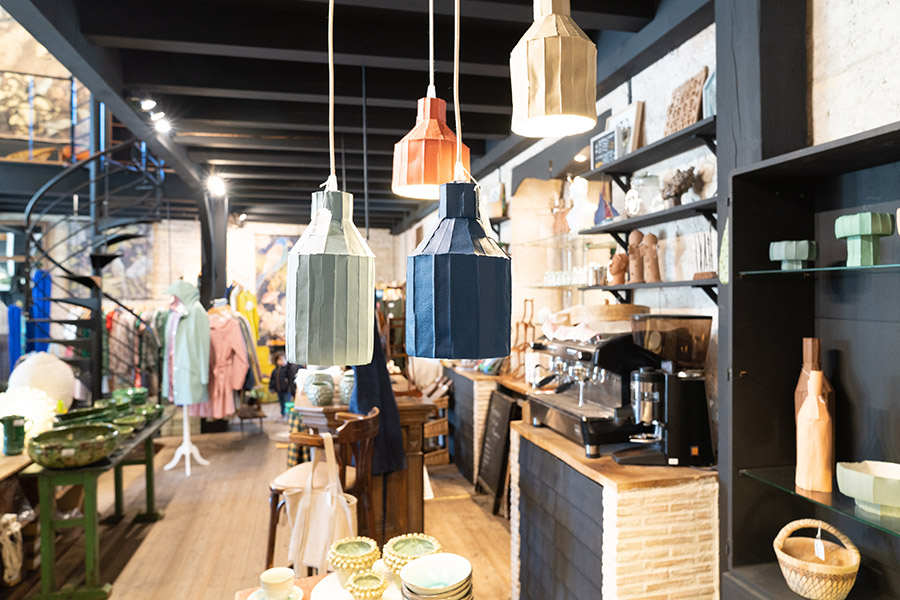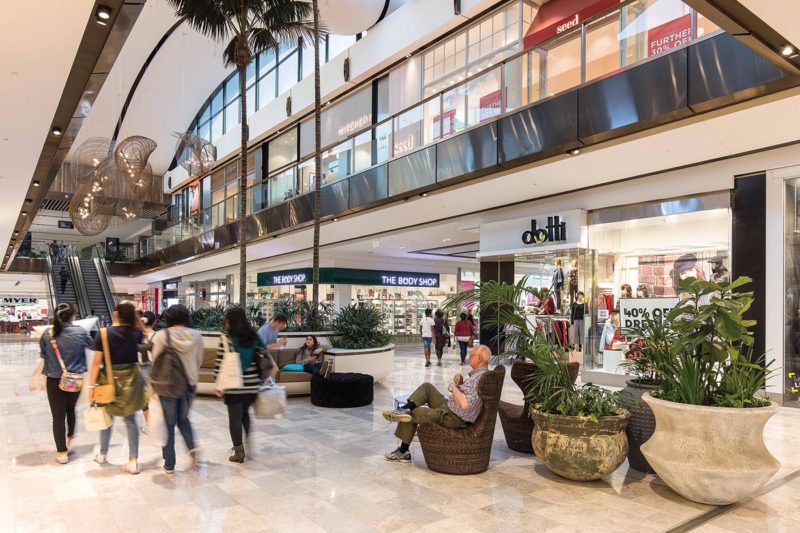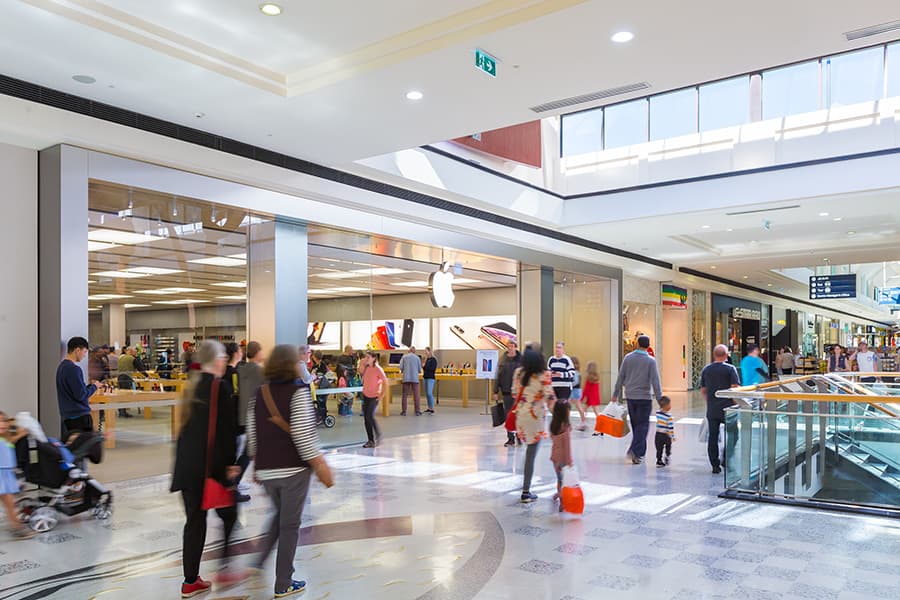Australia’s key retail industry groups have united to release a Retail Recovery Protocol for COVID-19 to assure the community, including retail employees and customers are safe in retail stores and shopping centres. As social distancing restrictions ease, and retailers return to opening stores the protocol will ensure the industry maintains a standard across the board. The industry wants the community to have confidence that retailers and shopping centres will continue to follow stringent public health guidelines, particularly as the community access essential services such as supermarkets, pharmacies and other goods and services.
This assurance comes as Australia’s governments are considering the gradual easing of current restrictions which would see more retailers reopening and increased visitation to shopping centres. The Shopping Centre Council of Australia (SCCA), National Retail Association (NRA), Shop Distributive and Allied Employees Association (SDA), Pharmacy Guild of Australia (PGA) and Australian Retailers Association (ARA) have jointly developed the Protocol to provide a consistent, practical and public-health led guide for shopping centres and retailers that continue to trade, are reopening or are preparing to re-open when COVID-19 restrictions start to ease.
The key principles guiding the development of the Protocol align with the retail industry’s approach to date, which continues to be prioritising public health and safety to protect people against infection, compliance with public health guidelines, working with governments and public health authorities, and helping to prevent the spread of COVID-19.
Based on the ‘limits on public gatherings’ announced by National Cabinet in late March, the Protocol outlines 10 key actions that retailers and shopping centre could take, including the following:
1. Making alcohol-based hand sanitiser at key locations such as store entrances, building entrances, customer service desks and food courts,
2. Increasing frequent cleaning and disinfecting of regularly used objects and hard surfaces (e.g. payment registers, ETFPOS machines, hand-rails, bathroom door handles, shelves, shopping trolleys, counters and benches, food-court tables, staff-rooms) and other key hygiene measures (e.g. waste disposal).
3. Facilitating and encouraging social distancing guidelines in accordance with Government or public health authority directions, which is currently a distance of 1.5m. Actions could include signage ‘reminders’, one-way queueing, and ground markings (e.g. stickers or tape) for queueing.
4. Ensuring public gathering limits in accordance with Government direction are adhered to, which is currently no more than 1 person per 4m2 in stores (inclusive of staff), can be maintained. Actions could include regulating access points, monitoring customer counts at relevant entrances, and displaying signage.
5. Promoting contactless transactions such as ‘tap and go’ instead of cash for payments, facilitating distancing at counters and benches, and staff wearing disposable gloves when they are handling objects and money.
6. Monitoring and encouraging customer adherence to relevant public health guidelines by security guards and other personnel, which may also include Police visits to shopping centres.
7. Continuing to focus on the community’s access to essential services such as supermarkets, pharmacies and health and medical facilities, especially for vulnerable people.
8. Daily check-ins with employees on their well-being, ensuring employees and contractors are properly trained and have access to relevant information and personal protective equipment (PPE). These check-ins will include monitoring customer behaviour to ensure retail workers are being treated with respect – abusive and violent behaviour towards retail workers will not be tolerated.
9. Fostering open and frequent communication between shopping centre management and retailers, including to alert each party to any Government or public health authority directive, to assist authorities when required, and continue to release information and guidance to employees and customers about good hygiene advice.
10. Maintaining relevant essential safety measures such as air-handling systems, exit doors, emergency power supply, smoke alarms, sprinkler systems and fire-isolated stairs.
Key actions will be different at each shopping centre and retailer, noting that each shopping centre, retailer (e.g. café versus clothing versus pharmacy) and retail premises is different, including issues such as location, tenancy mix, operating hours, size, customer visits, open-air / enclosed spaces, customer access points, car-parks, loading docks and co-location with public transport facilities.

The code calls on the community to treat all retail workers with respect
As a responsibility of all parties, the protocol calls on the continuation of facilitating and encouraging social distancing and ensuring adherence to public gathering limits to ensure in all retail areas and stores.
The SCCA, NRA, SDA, PGA and ARA have also called on Australians to treat retail workers with respect while they continue to serve and ensure the community can access essential and other retail goods and services.
Shopping Centre Council CEO Angus Nardi said, “As more people return to shopping centres, we want to assure the community our industry is working hand-in-hand to ensure that strict public health guidelines are followed and that we provide a safe, healthy and secure environment.”
One of the key protocol elements is fostering open and frequent communication between shopping centre management and retailers, including to alert each party to any Government or public health authority directive, to assist authorities when required, and continue to release information and guidance to employees and customers about good hygiene advice.

Social distancing will remain in place as retailers and shopping centre re-open
National Retail Association CEO Dominique Lamb said, “As more retail stores start to reopen, which will see a surge in customer demand, the community should have confidence their health and safety is a priority for retailers including how they purchase goods and interact with staff.”
Australian Retailers Association CEO Paul Zahra said, “Retailers have made an enormous effort to protect staff and shoppers, working tirelessly to create a safe and healthy in environment through the lockdown period and now as most businesses prepare to reopen and serve their customers. This protocol provides the clarity and consistency that retailers are looking for at this time around best-practice.”
National Secretary of the Shop, Distributive and Allied Employees Association Gerard Dwyer said: ”As retail workers continue to be on the front-line serving the community, it is critical that they have a safe working environment and that public health protocols are in place to protect them and their customers”.
Pharmacy Guild of Australia National President, George Tambassis said: “We will continue to work closely with the shopping centre industry to ensure a united and collaborative approach.”
The key principles which have guided the Protocol are:
• Public health and safety guidelines to protect people against infection and help prevent the spread of COVID-19,
• Compliance with ongoing Government and public health authority rules, directions and restrictions, and
• Working with and assisting Government and public health authorities when required.
The COVID-19 Recovery Safety Plan, will be made available to employees, contractors and the community, and which could be reviewed and amended regularly as restrictions ease and in response to any Government or public health authority directive.





















